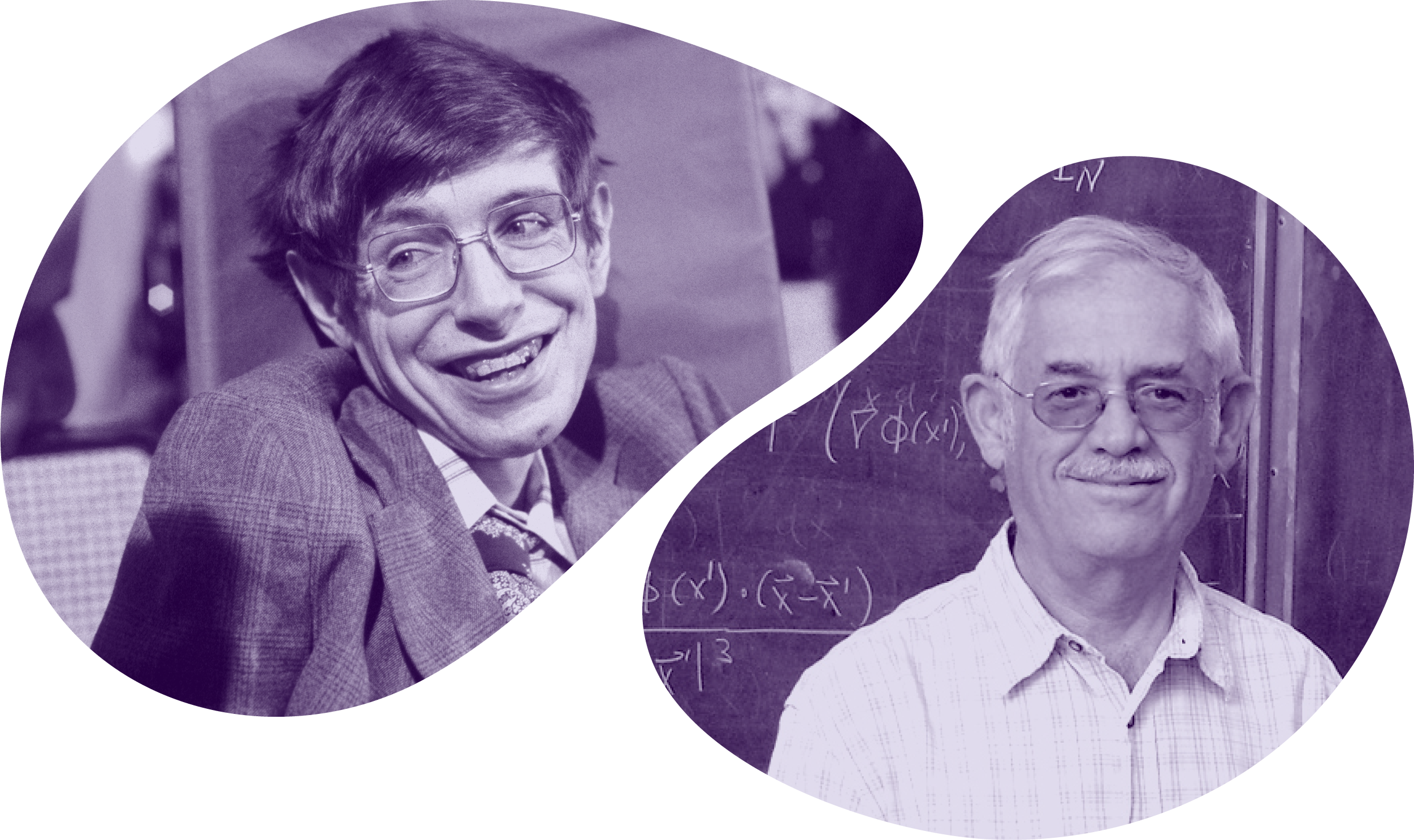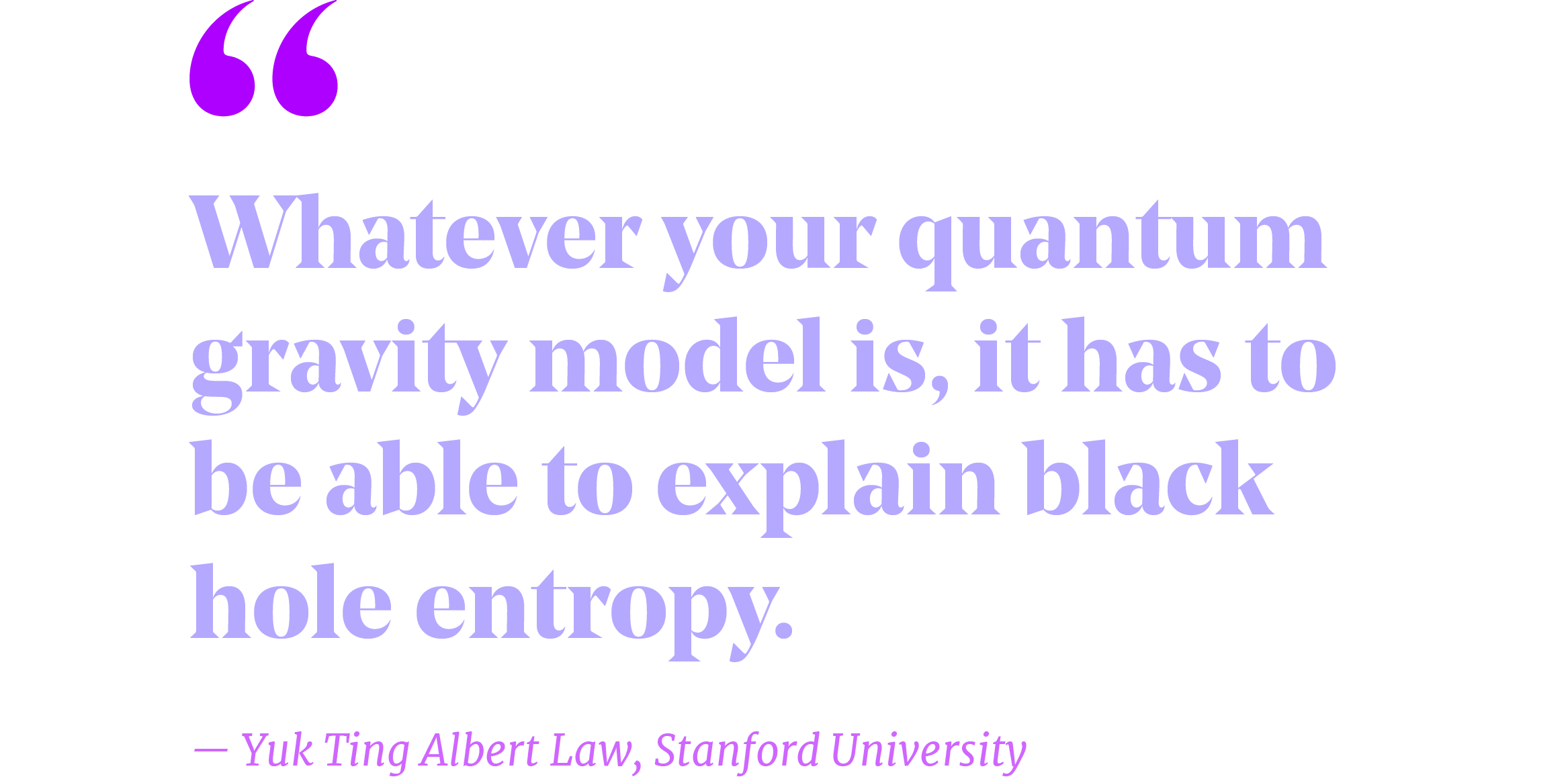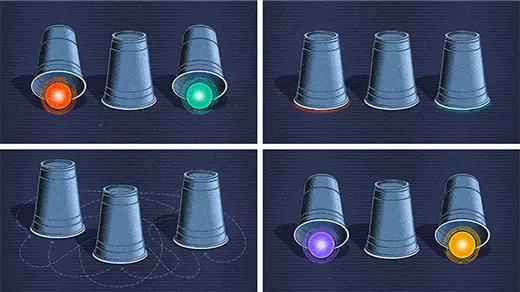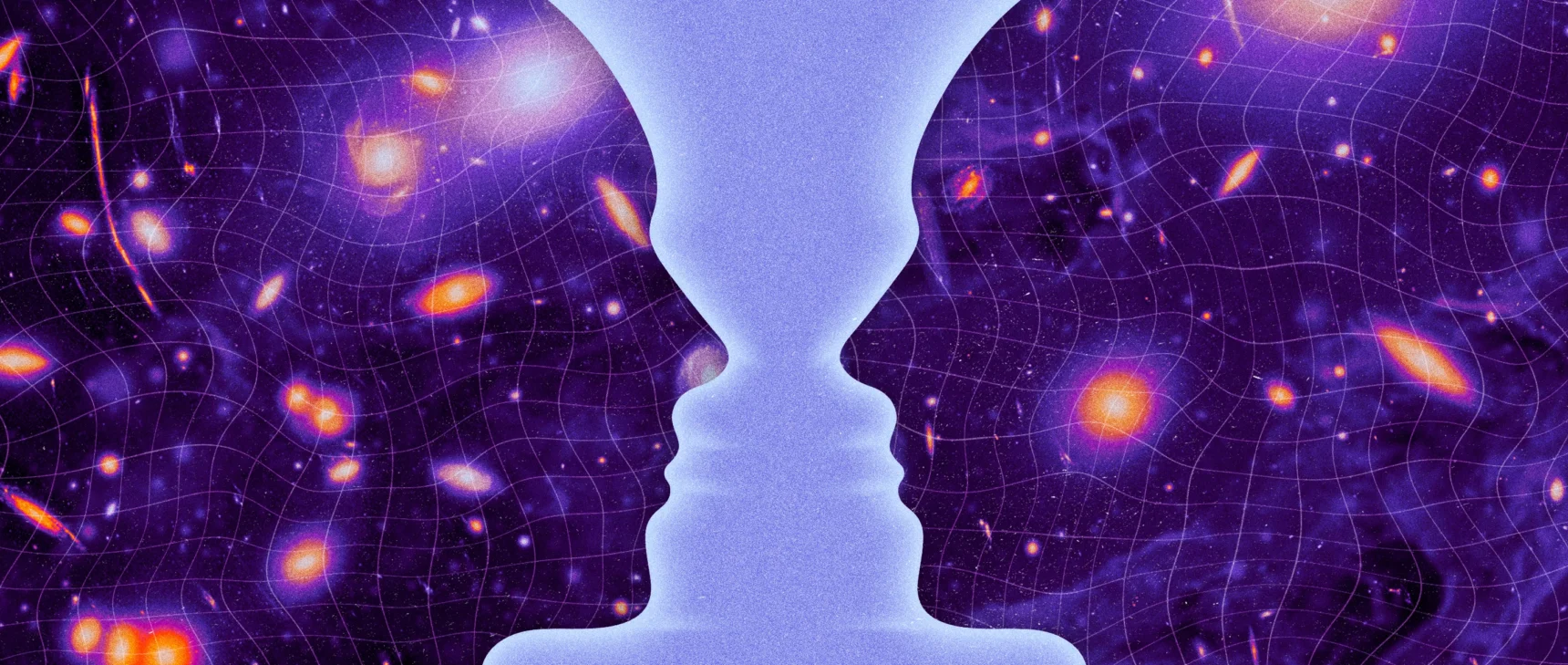The #1 Clue to Quantum Gravity Sits on the Surfaces of Black Holes

Kristina Armitage/Quanta Magazine
Karl Schwarzschild first stumbled upon black holes in 1916, but for a long time they weren’t really a thing. “Black holes were discovered as a purely geometric object — in a sense, just empty space. Nothing,” said Yuk Ting Albert Law, a theoretical physicist at Stanford University.
A mathematical oddity that popped out of Albert Einstein’s general theory of relativity, a black hole is the space-time fabric’s most extreme contortion, a place where its curvature and gravitational pull become infinite. Anything that gets too close to that point can never escape — not even light.
Black holes grew more substantive with the work of Stephen Hawking and Jacob Bekenstein in the 1970s. Their calculations transformed black holes from contorted space into real objects with “possible microscopic structure,” Law said. The findings had far-reaching consequences that continue to shape our understanding of space-time, and to sharpen its mysteries.
The series of insights began in 1972, when Hawking showed that a black hole’s size — specifically its spherical surface area — always increases in proportion to the mass of whatever falls into it. The rule resembled the second law of thermodynamics, which says that entropy, a measure of disorder in a system, never decreases.
Most physicists, including Hawking, didn’t take the similarity too literally. “People thought this had nothing to do with thermodynamics. It just looked mathematically similar,” said Elba Alonso-Monsalve, a theoretical physicist at the Massachusetts Institute of Technology.
Bekenstein disagreed. He argued that black holes must have entropy. If they didn’t, consider the case where a hot cup of tea falls into a black hole. The tea’s entropy would seem to disappear, which would violate the second law of thermodynamics. That is, unless the black hole’s swelling surface area meant that its own entropy was increasing to make up the difference.
The black hole’s area should therefore be treated as a proxy for its entropy, according to Bekenstein. “He saw that if you take the area seriously as entropy, then the total entropy of the universe increases,” as it should, when anything falls into the black hole, Alonso-Monsalve said.
Bekenstein’s entropy-area relationship was just a conjecture. Then Hawking turned it into a precise, quantitative formula. He found the missing coefficients in the formula by combining the equations of quantum mechanics with the warped space-time surrounding a black hole. He calculated that black holes actually radiate like any warm object, which means they have a measurable temperature. Working backward, he used this temperature to calculate the black hole’s entropy, getting an exact expression in terms of its area.
The formula had radical implications.
At a fundamental level, entropy means options. You calculate it by looking at something from the outside and gaming out the number of different ways its particles could be arranged to make it appear that way. The more microscopic possibilities there are for the state of a system that you can’t distinguish from the outside, the more entropy the system has.

Research in the 1970s by the British physicist Stephen Hawking (left) and, working independently, the Israeli American physicist Jacob Bekenstein showed that the entropy of a black hole depends on its area.
From left: Santi Visalli/Getty Images; Jakob Bekenstein/Wikimedia Commons
Entropy usually scales with the volume of a system, because it’s distributed among all the atoms inside. A jug filled with two cups of water has twice the entropy of one cup.
Black holes are strikingly different. The Bekenstein-Hawking formula says that the entropy of a black hole scales with its surface area, not with the amount of space contained within it. If enough stuff falls into a black hole to double its volume, its entropy will only increase by about half.
The formula implies that all of the microscopic information that’s inaccessible from outside a black hole is encoded on its surface. It’s as if the volume enclosed by that impermeable boundary contains no additional information — as if the boundary itself is the more important, more fundamental object.

To this day, the entropy-area law is one of the most concrete things we know about the quantum nature of gravity. “Whatever your quantum gravity model is, it has to be able to explain black hole entropy,” Law said. This is one of the great successes of string theory, a candidate “theory of everything” that describes the quantum origin of gravity as vibrating loops of energy. In 1996, Andrew Strominger and Cumrun Vafa counted up the microscopic states underlying a black hole in string theory, and they arrived at Bekenstein’s entropy-area formula.
So the key to black holes’ underlying structure exists on their surface. “People began to think,” Law said, “that maybe whatever microscopic theory describes black holes lives in a space-time with one lower dimension.” This concept, called the holographic principle, may extend from black holes to space-time in general. Perhaps the bendy, gravitating fabric of our universe itself emerges from whatever is happening on some lower-dimensional boundary.




